Power factor has never been a problem. In the past, there were regulations in the country that power factor requirements were required for power exceeding 75 watts (until now, there is no power factor requirement for laptops below 75 W). So there has never been any power factor requirement for the luminaire. Just like fluorescent lamps, the power factor is very poor, no one has ever put forward any opinions, and the state has not made any demands. Later, with the energy-saving lamps, although the country put forward a request, it is very loose, and it has requirements for more than 15 watts, while most of the energy-saving lamps are less than 15 watts. So it is equal to no request. Only after the appearance of LED lamps, they are strictly required. Only those below 5 watts are not required. Above 5W, the power factor must be >0.7. In addition to the small MR16 spotlights, which are 3 watts, most of the LED luminaires are more than 5 watts. So this rule just caught the neck of the LED. So let's take a closer look at the power factor problem!
one. What is the power factor?
We know that all generators are rotating machines and the resulting voltage is a sine wave. This is what we call AC. One of the advantages of AC power is that it can be changed by a transformer to change its voltage, and it can be raised to hundreds of thousands of volts for long-distance transmission to reduce the loss in transmission. After the destination, it will be reduced to become our common city. Electricity. Our current utility is 220V, 50Hz AC. In electrical engineering, alternating current can be represented by vectors. The vector can represent voltage as well as current. For a purely resistive load, the voltage and current are in phase, while for a pure capacitive load or a purely inductive load, the current and voltage are out of phase, but have a phase angle of 90 degrees, or phase difference. In a purely inductive load, the voltage on it is 90 degrees ahead of the current, while the voltage on the pure capacitive load is 90 degrees behind the current.
If we use a waveform, the voltage is usually expressed as a cosine wave. If the current lags behind the voltage, it is an inductive load. The leading voltage is a capacitive load.
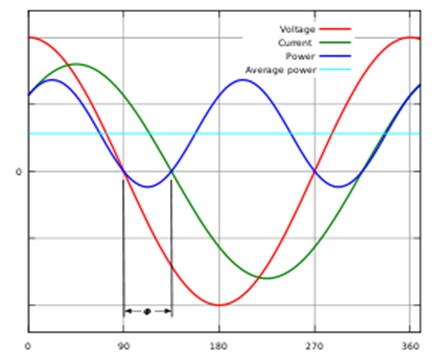
   Figure 1. Relationship between AC voltage and AC current for inductive loads
Because virtually no pure and pure capacitors exist, the actual load can only be called an inductive load or a capacitive load. At this time, there is an angle φ between the AC voltage and the AC current. For the inductive load, we call this angle φL, and for the capacitive load, the angle is called φC. (See Figure 2)
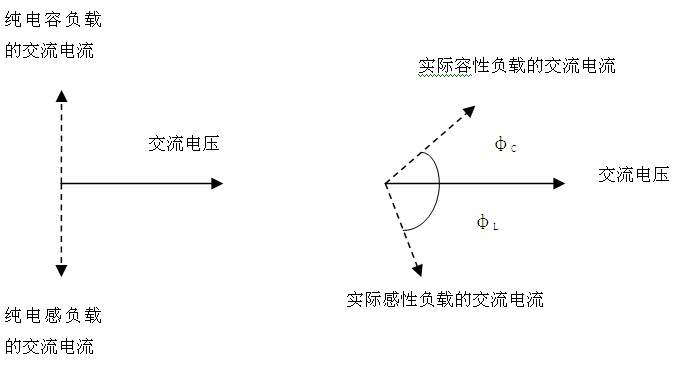
   Figure 2. Vector representation of inductive and capacitive load voltages and currents
The power is equal to the product of voltage and current, but only for purely resistive loads (voltage and current are in phase), and for inductive or capacitive loads, the vector of current is projected onto the voltage vector (horizontal axis). That is, multiply by cosφL or cosφC. We usually refer to this cosφL or cosφC as the power factor.
However, since this angle can be positive or negative, the power factor can also be positive (inductive load) or negative (capacitive load).
But when we use vectors to represent voltage and current, the premise is that their frequencies must be identical. And it is in a linear system.
In linear systems we also express the power factor as the ratio of active power to apparent power. The so-called active power is the product of the voltage and current rms value of the same phase as the current. The apparent power is the "power" obtained by directly multiplying the effective values ​​of the voltage and current without considering the phase difference therebetween. The ratio of the two is obviously the cosine cosφ of the phase angle mentioned above.
two. Power factor of various household appliances
Some people have tested the power consumption and power factor of various household appliances. The results are as follows:
No. Name Equipment Capacity (W) Power Factor Reactive Power (var) Apparent Power (VA)
1 Lighting 200 0.90 96.86 222.22
2 air conditioner 3000 0.80 2250.00 3750.00
3 Refrigerator 150 0.60 200.00 250.00
4 Microwave oven 1000 0.90 484.32 1111.11
5 electric water heater 2000 1.00 0.00 2000.00
6 rice cooker 1000 1.00 0.00 1000.00
7 Computer 300 0.80 225.00 375.00
8 Printer 250 0.80 187.50 312.50
9 TV 200 0.80 150.00 250.00
10 Washing machine 200 0.60 266.67 333.33
11 Range hood 50 0. 80 37.50 62.50
12 stereo 300 0.60 400.00 500.00
13 water dispenser 600 1.00 0.00 600.00
14 Sanitary equipment 1000 1.00 0.00 1000.00
15 Health Equipment 600 0.80 450.00 750.00
16 video recorder 200 0.90 96.86 222.22
17 DVD\VCD 100 0.90 48.43 111.11
These data are of course only for reference.
It should be noted:
1. The power factor of all electric appliances is equal to 1, because they are all resistive loads.
2. All household appliances with motors (most white goods) are inductive loads.
3. All household appliances (television, stereo) with transformers are also inductive loads.
4. A 24-hour continuous refrigerator is an inductive load that consumes a lot of power and has a low power factor.
5. The lighting factor is close to 1. Because the lighting is mainly incandescent.
three. Power factor of various lamps
We know that incandescent lamps are a pure resistor, and its power factor is of course equal to 1. But this is not the case with more and more fluorescent lamps and energy-saving lamps that have been promoted recently by the state. Fluorescent lamps have long been activated with a large inductor and a starter. After lighting, the large inductor is connected in series in the circuit, so it is basically an inductive load, its power factor is only 0.51-0.56. After switching to electronic ballast, the power factor is better, but because the electronic ballast is easy Burned, so the most used is the magnetic ballast.
The power factor of the energy-saving lamp is only about 0.54, and it is also an inductive load.
four. Power factor of LED lamps
Because the LED is a semiconductor diode, it requires DC power. If it is powered by the mains, there must be a rectifier, usually a diode rectifier bridge. In order to get the smoothest possible DC to avoid ripple flicker, it is usually necessary to add a large electrolytic capacitor. The latter LED can be approximated as a resistor, so the entire circuit is shown in Figure 3.
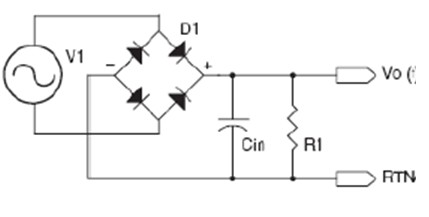
   Figure 3. The equivalent circuit of an LED luminaire
Its various current voltages are shown in Figure 4.
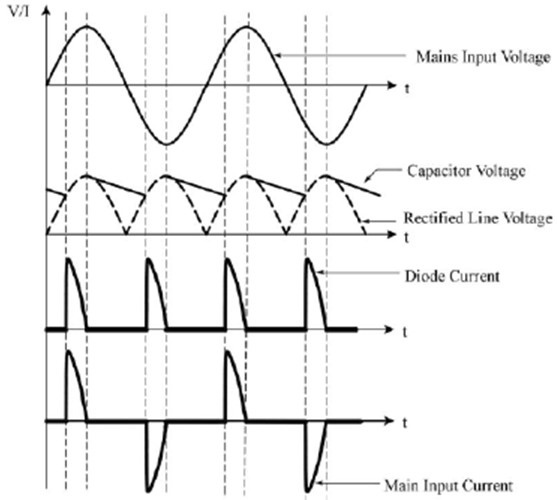
   Figure 4. Voltage and current waveforms after bridge rectification and capacitor filtering
The rectified voltage and current waveforms are not sinusoidal, and although the voltage waveform before rectification is a sine wave, the current waveform is not a sine wave. So the whole system is a nonlinear system. The original power factor is defined for the linear system, and the input and output voltage and current are required to be sinusoidal at the same frequency. Otherwise, Cosφ cannot be used. However, in a non-sinusoidal system, since the voltage and current waveforms are not sinusoidal, there is no phase angle to say. Therefore, the power factor in a nonlinear system must be redefined.
Another definition of power factor as previously described is the ratio of active power to apparent power. Active power refers to the actual output power, while apparent power refers to the product of the input voltage rms value and the input current rms value. This is completely equivalent to Cosφ in a sine wave system, so there is no problem. But in a nonlinear system, what is active power and what is apparent power is worth exploring.
Because in a nonlinear system, its current waveform has many higher harmonics (see Figure 5).
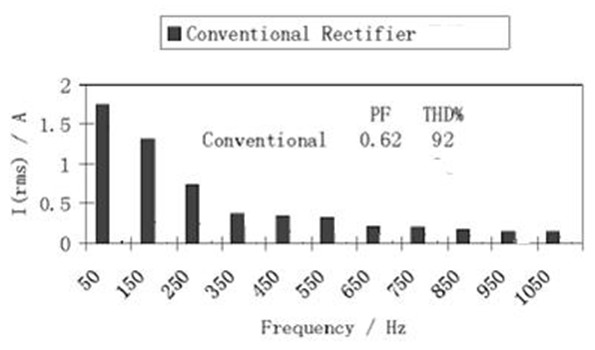
   Figure 5. Current harmonics of a common bridge rectifier
So what to take as its apparent power is a big problem. There are various practices now.
1. Multiply the fundamental rms value of the current and the sinusoidal voltage rms value as its apparent power, either as the power factor of the fundamental phase of the fundamental or as the power factor of the zero-crossing phase of the current waveform. . Some instruments are measured like this. It can be seen from the waveform diagram of this current that the higher harmonics of this waveform are very rich, and the fundamental wave is very small. If the fundamental current is used to multiply the fundamental voltage, then the obtained power is compared with the active power. Very small, so its power factor will be very high and may even be greater than 1.
This is the case, for example, in some pointer power factor meters.
2. Multiply the effective value of the voltage by the effective value of the current as the apparent power.
Many digital power factor meters now use the product of voltage rms and current rms as apparent power.
The rms value for a non-sinusoidal current can be expressed as the rms value of each harmonic current:

If the defined power factor is equal to the ratio of actual power to apparent power

Harmonic distortion is usually defined as:

Many of today's digital power factor meters are basically defined in this way.
However, the definition of power must be the product of the voltage rms value of the same frequency sine wave and the current rms value. The product of the rms current of the current harmonic and the rms value of the fundamental voltage cannot be considered as power, because its frequency is not the same, so it is meaningless. So using this method to define apparent power is problematic. Unfortunately, many digital meters are now measured this way.
In fact, this issue has been controversial in academia, so both the US master's thesis and the Swedish doctoral thesis are still studying this issue.
For example, Stefan Svensson of Sweden pointed out in his doctoral thesis that in the case of nonlinearity, seven different definitions have been proposed for the power factor. The same nonlinear system can be obtained under different definitions. A completely different power factor value. And no matter which definition it is, it does not meet the original intention of proposing the power factor in the linear system. E.g. In linear systems, inductive or capacitive loads can be compensated for with pure or pure inductance. This is obviously ineffective in nonlinear systems. So these defined power factors completely lose the meaning of the original power factor.
In fact, in the case of non-linear loads, the biggest problem is the harmonic current, because although the harmonic current cannot form apparent power with the fundamental voltage, the square of the harmonic current multiplied by the line resistance causes heat loss. Moreover, this harmonic current cannot be compensated by a simple capacitor or inductor. So what really needs to be limited is the harmonic current value. Instead of the so-called "power factor".
Fives. Is the current relevant regulation reasonable?
Even if we accept the power factor value of the LED luminaire measured by the existing ordinary power factor meter, it is allowed. According to the US Energy Star regulations, LED lamps with a power of less than 5 watts do not require a power factor. More than 5 watts requires a power factor greater than 0.7. China now adopts the same rules as the United States. However, the standard of Shenzhen LED Industry Standard Alliance is <10W, PF>0.7; power is between 10W-30W, PF>0.85; power>30W, PF>0.9. More than the national regulations.
But this rule is obviously unreasonable.
1. Why is there a power factor requirement for more than 15 watts for mercury-containing “energy-saving lamps� Instead, more stringent requirements are imposed on LED lamps that are both energy-saving and environmentally friendly. This is obviously harmful and unhelpful for the promotion of LED lamps for energy saving and emission reduction. This makes people have to doubt the interests of some big companies involved.
2. Most LED luminaires have a negative power factor, which is a capacitive load. Most of the home appliances are inductive loads. The call industry needs to use large high-voltage capacitors to compensate the secondary of the transformer. Now LED lamps can be compensated at the load end. This is obviously a good thing, why should Limit it.
3. Although many LED driver power supplies are now equipped with power factor correction to make it close to 1. But the irony is that the reason why many LED driver chip companies fully develop high power factor chips is to be able to The silicon-controlled dimmer (Triac) is matched. Because the original thyristor dimmer can only be used for pure resistance incandescent lamps with a power factor of 1. LED luminaires now have a higher power factor so they can be combined with thyristor dimmers. However, after using the thyristor dimmer, the overall power factor is getting worse with the dimming of the light until it is less than 0.5. And the overall efficiency is getting lower and lower, completely losing the energy-saving advantages of the LED. The following are the power factor values ​​of the thyristor dimming system that the author measured:
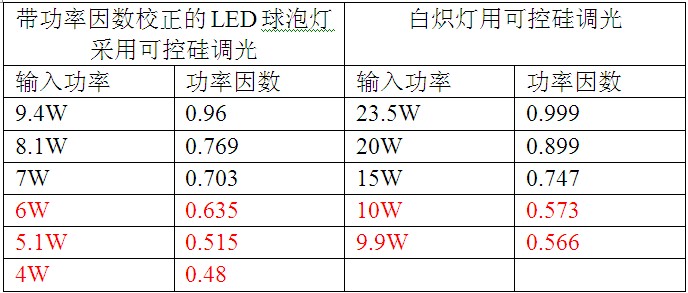
It can be seen from the table that even if the power factor has been improved to an LED luminaire higher than 0.96, when the dimming is performed together with the thyristor, when the input power is adjusted from 9.4W to 6W, the overall power factor is 0.96 was reduced to 0.635. And can not meet the requirements of >0.7. Moreover, its overall efficiency is also very low. Completely lost the energy-efficient advantages of LED lamps.
In fact, the biggest feature of LED is that it is easy to achieve low-power analog dimming or even digital PWM dimming without power. It is difficult to understand that the authorities have no power factor limitations for a very backward dimming device such as thyristor that was decades ago, and it has also turned a blind eye to the use of the most advanced LEDs. This kind of cooperation is known as "compatible with existing equipment". In fact, it is arbitrarily left behind!
Recently, we bought some LED bulbs used in Japan from Japan and measured its power factor. The results are as follows:

From this point of view, Japan does not have a power factor requirement for bulbs of at least 15W. This has greatly promoted the rapid promotion of LED lamps in Japan.
Conclusion
The most important thing in the scientific development concept is sustainable development. The most important of these is energy conservation and emission reduction. For all new technology countries that contribute to energy conservation and emission reduction, they should be supported. LED is one of the most important. I thought that in the beginning, the country also sent one energy-saving lamp per household to replace incandescent lamps for free. However, energy-saving lamps have many problems such as insufficient light efficiency, mercury pollution, and fragility. Far from being able to compare with LEDs. Now that LEDs are maturing, the country should fully support it from all aspects with greater efforts and promote it! More should not set more stringent power factor requirements than energy-saving lamps to limit the development of LED!
Radiators, essential yes, but sometimes they`re pretty ugly. I can say this from personal experience, as a discoloured radiator sits in my hallway bringing down the decor. Faced with the option of replacing it at great cost, I`m now thinking a splash of paint might be the better option.
That theory is backed up by seeing this bold painted radiator transformation!
Painted Radiator,Finned Painted Radiator,Distribution Finned Painted Radiator,Painted Transformer Cooling Radiator
Shenyang Tiantong Electricity Co., Ltd. , https://www.ttradiator.com